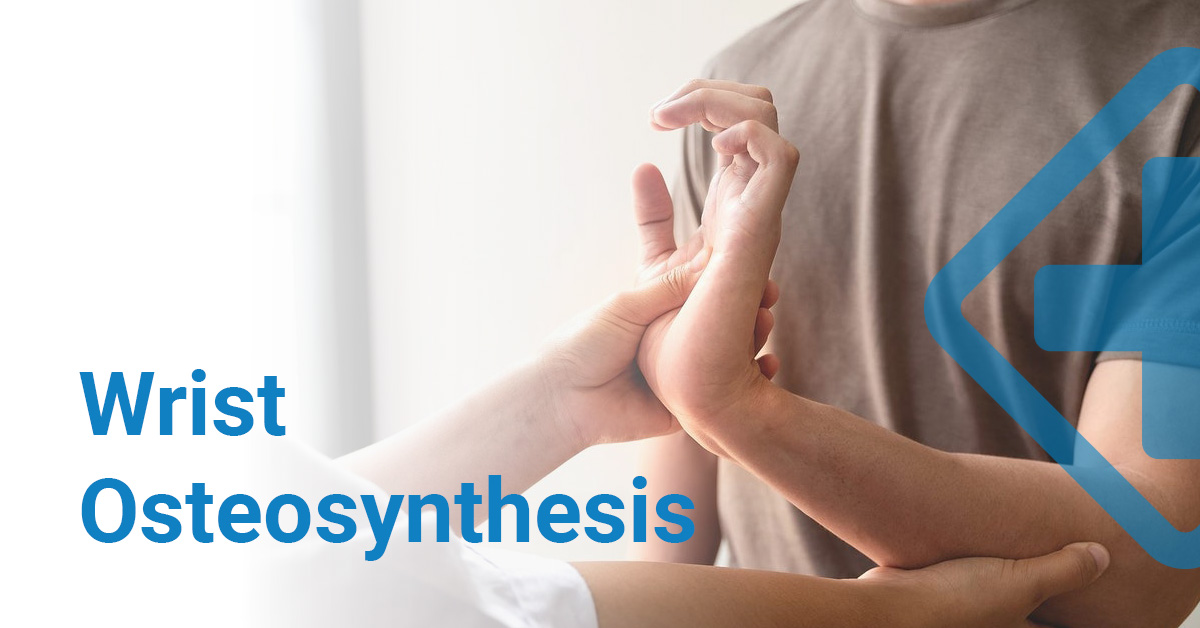
Hip Fracture
Hip Fracture is a high-risk injury, the chances of suffering it increase with age.

Hip fracture has various complications that can endanger a patient's life.
Older people are at higher risk of suffering a hip fracture, because, over the years, the bones tend to weaken (Osteoporosis). Falls are one of the most common causes of hip fractures.
Generally, a hip fracture requires a surgical replacement or reconstruction, accompanied by a physical therapy treatment. Maintaining good bone health and preventing falls can help you avoid a hip fracture.
Causes
The most common cause of suffering a hip fracture is having a severe injury caused, for example in a car accident.
In the case of older adults, in most cases, it is the result of a fall. People with fragile bones can suffer a hip fracture when turning while standing.
Symptoms
The following are some of the possible symptoms:
-
Problems being able to move immediately after a fall
-
Severe pain in the hip
-
Outward roll of the leg on the side of the injured hip
-
Not being able to put weight on the leg on the injured side
-
Stiffness, bruising, and swelling in the injured hip area
-
Shorter leg on the injured side
Risk factors
-
Age, because over the years the bones tend to weaken (Osteoporosis)
-
Gender, women are more likely to suffer a hip fracture, as they lose bone density faster than men.
-
Chronic medical disorders can cause brittle bones
-
Some medications
-
Cortisone can cause weakness in the bones if you take it for a long time
-
Medicines that can make you dizzy and make you more likely to fall
-
Medications that cause an effect on the central nervous system, such as sedatives, sleeping pills, etc.
-
Nutritional problems
-
Lack of physical activity
-
Tobacco use
-
Alcohol consumption
Diagnosis of Hip fracture
The Traumatologist will perform various tests and questions based on your symptoms. In general, the Traumatologist can diagnose a Hip fracture by analyzing your symptoms and the irregular position of the leg and hip.
The Traumatologist may perform an x-ray; this will allow him to visualize the bone fracture's location. If the x-ray does not show a fracture, but the pain persists, a bone scan or an MRI test will be chosen to detect a small fissure.
Hip fractures are usually created in one of two parts of the long bone that extends from the pelvis to the knee (femur):
-
A femoral neck fracture, located high in the femur, below the ball-joint part of the head of the femur
-
Intertrochanteric region. it is located slightly below the actual hip joint, on the top of the femur that projects outward
Sometimes a third type of hip fracture, "atypical fracture," can occur in patients who have been treated for a long time with drugs that increase bone mass.
Treatment of Hip Fracture
Fracture treatment consists of surgery, accompanied by rehabilitation and medications.
Surgery
The type of surgery will depend on the location and severity of the fracture. Following are the types of surgery that could be performed.
-
Internal arrangement by screws. Special compression screws are inserted into the bone to hold it together during the fracture recovery time. Sometimes the screws are attached to a metal plate along the femur.
-
Total hip replacement. The upper end of the femur and the socket in the pelvic bone are replaced with prostheses.
-
Partial hip replacement. If the extremities of the broken bone are damaged apart, the surgeon may remove the femur's head and neck and place a prosthesis. This procedure is recommended for adults who suffer from other diseases or cognitive impairment, or who no longer live independently.
Rehabilitation
After the surgery, you will be taken to the room where you can stay for a few days until the Traumatologist releases you.
One day after surgery, the care team will make you walk. You will have Physiotherapy treatment, which will focus on doing a range of motion and strengthening exercises.
Depending on the type of surgery, you may need an occupational therapist to learn exercises and techniques that help you perform activities on your own, such as going to the bathroom, dressing, and showering. The therapist will decide if you need a wheelchair or walker to regain your independence and mobility.
¿When do you have to see a doctor?
If you suffered a severe accident, an injury with severe pain, the ideal is to go to the emergency room. You can go directly to the BlueNetHospitals Emergency Room in Los Cabos or call an ambulance at 624 1043 911.
A hip fracture must be treated immediately as it can cause various complications that can endanger the patient's life.
When consulting your Traumatologist, try to keep a record of your pain with a detailed description of your symptoms.
BlueNetHospitals - Hospital Los Cabos
BlueNet Hospitals.
Health Library
Orthopedics and Traumatology

Hip Dysplasia
The symptoms of hip dysplasia vary depending on the individual's age
Osteoarthritis
Osteoarthritis is a disease that affects the joints in the body.
Kyphosis or Scheuermann’s disease
Causes, Symptoms, Diagnosis and Treatment. Schedule your appointment at BlueNetHospitals
Wrist Ostheosynthesis
Surgery performed to help relieve pain and improve mobility and function in severely damaged wrist joints. Schedule your Appointment Today.
- ¿Necesitas una cita con un Especialista?
- llámanos
- escríbenos
- Conéctate





